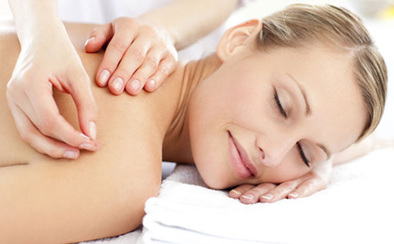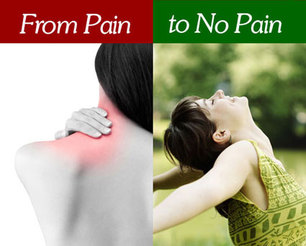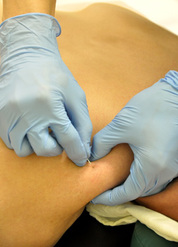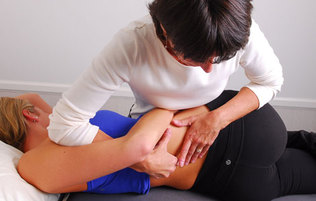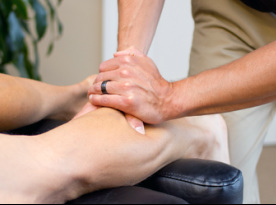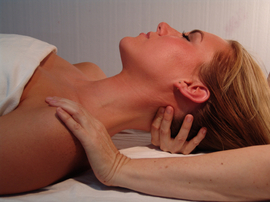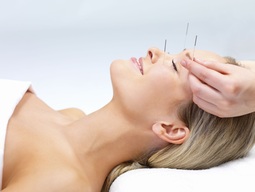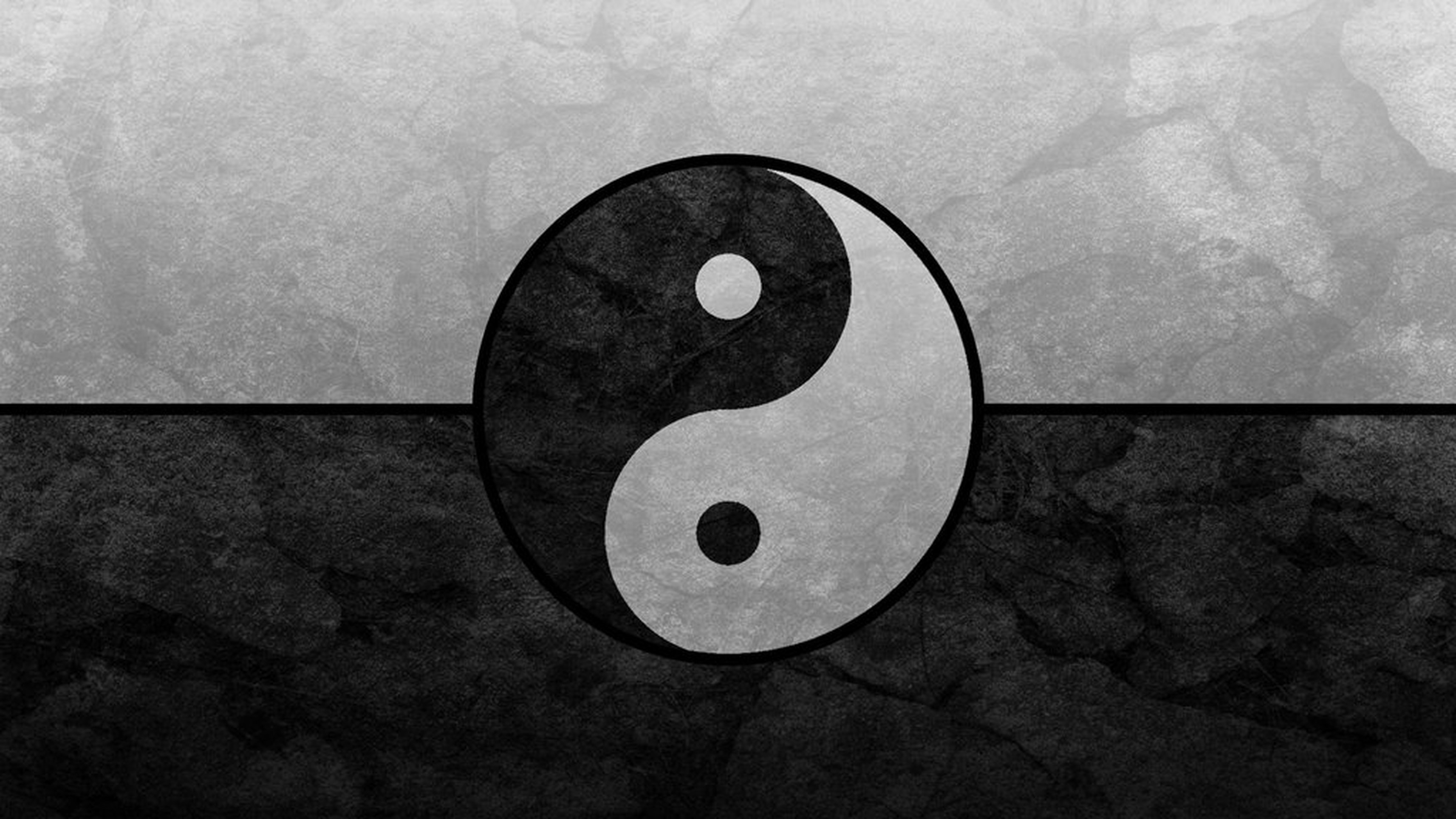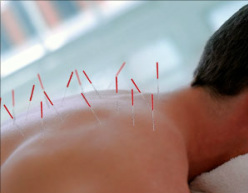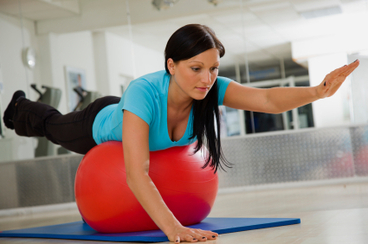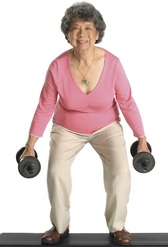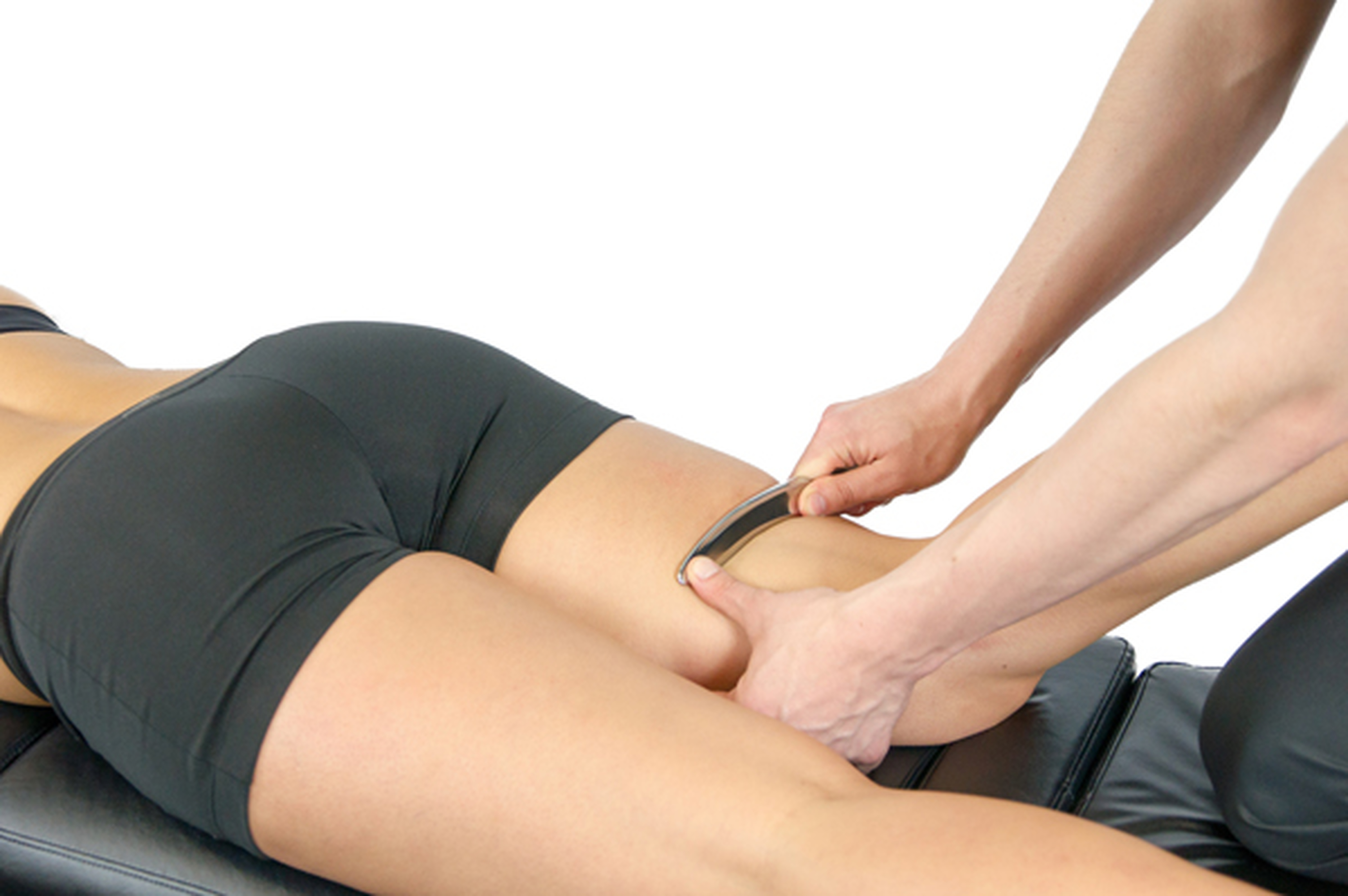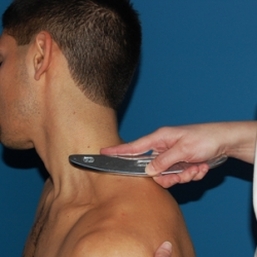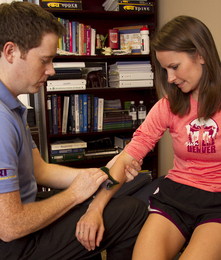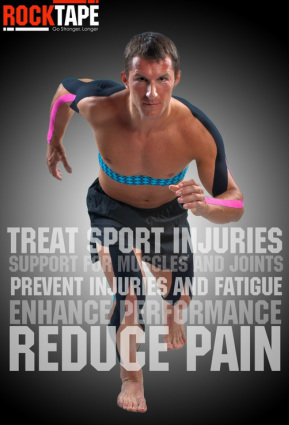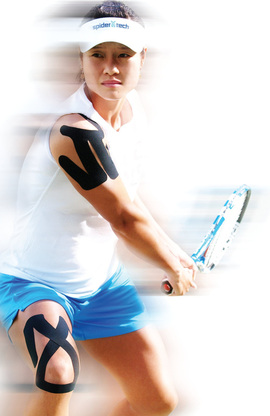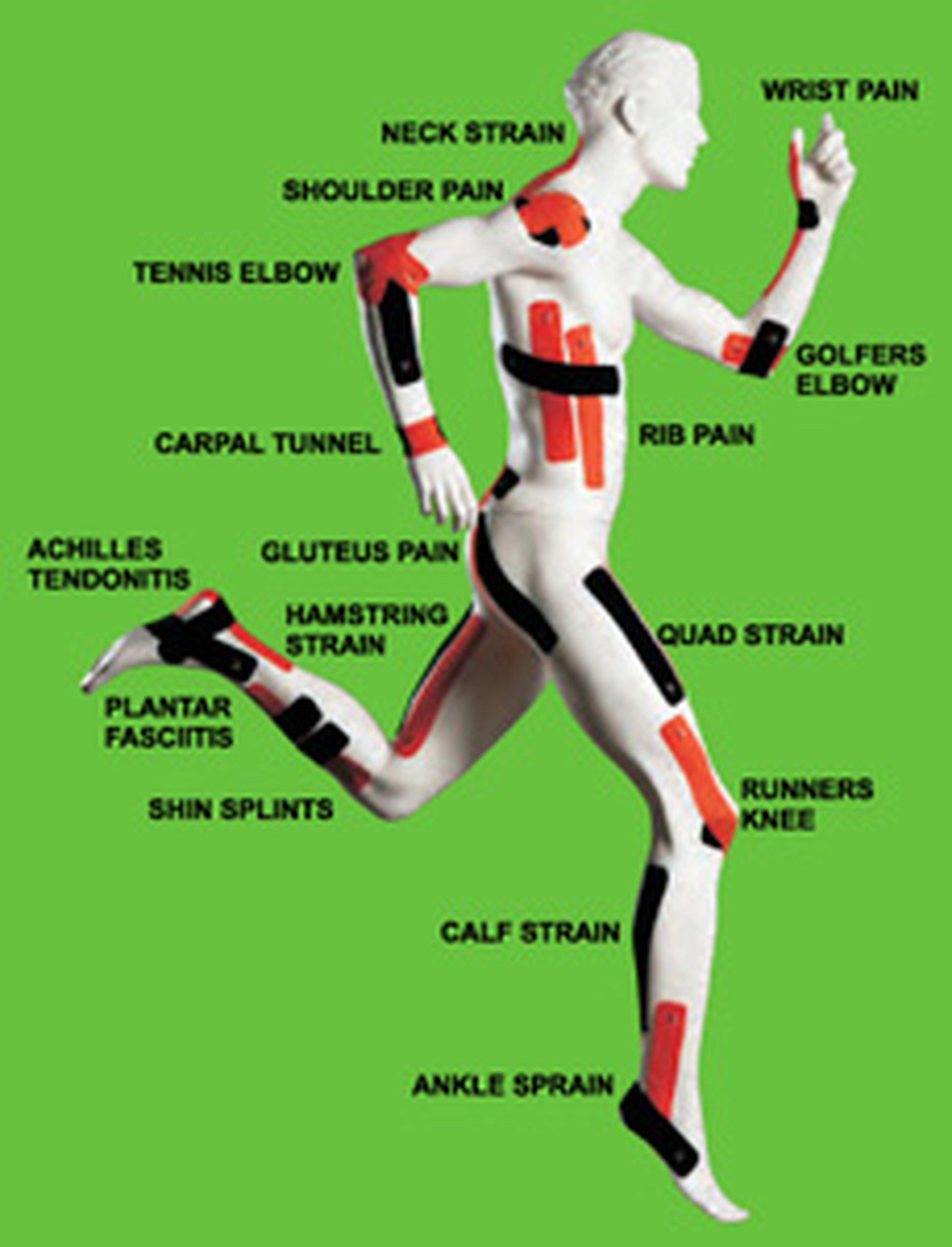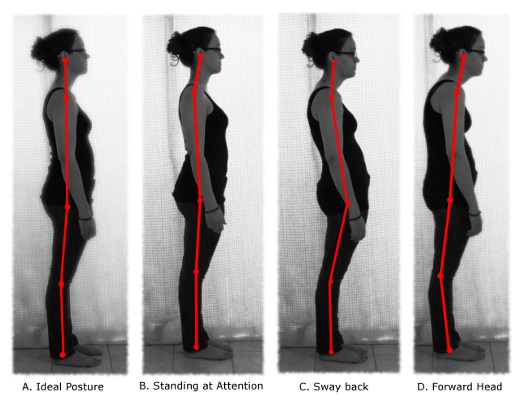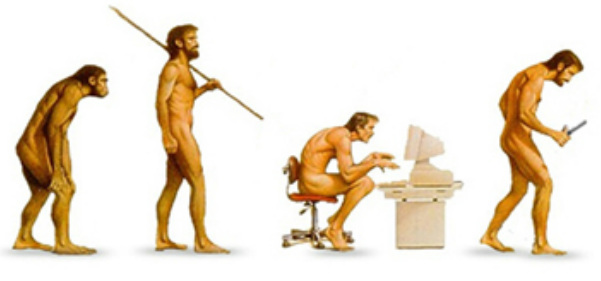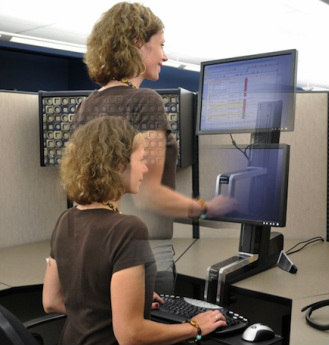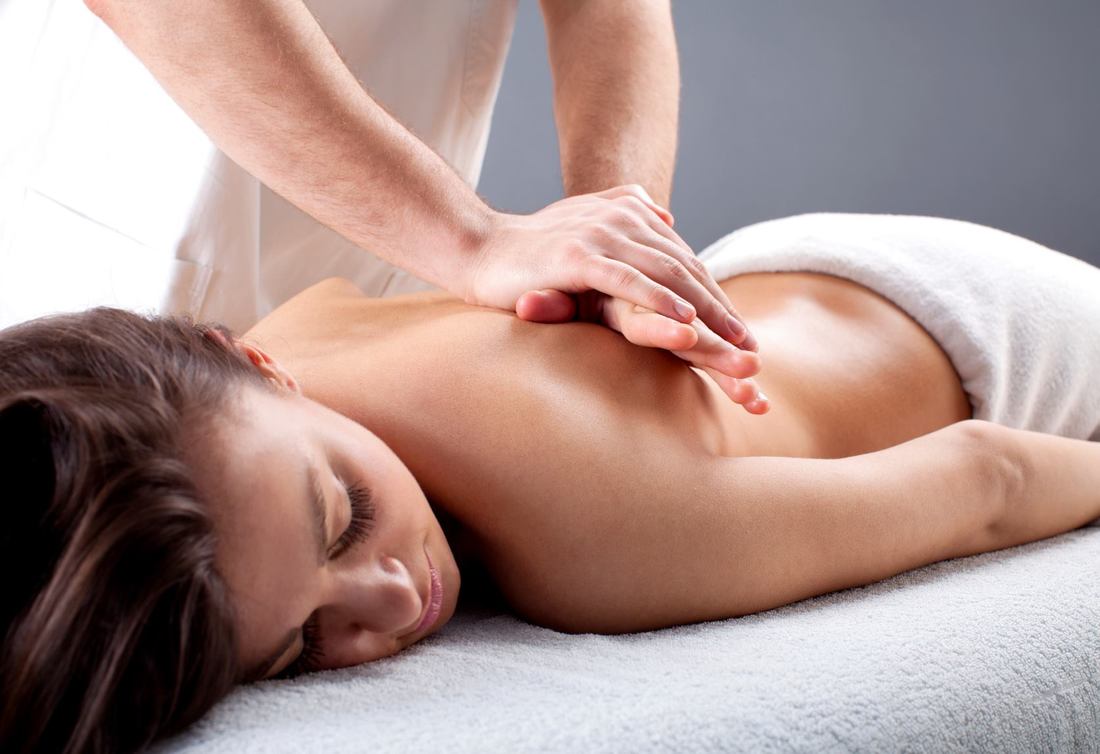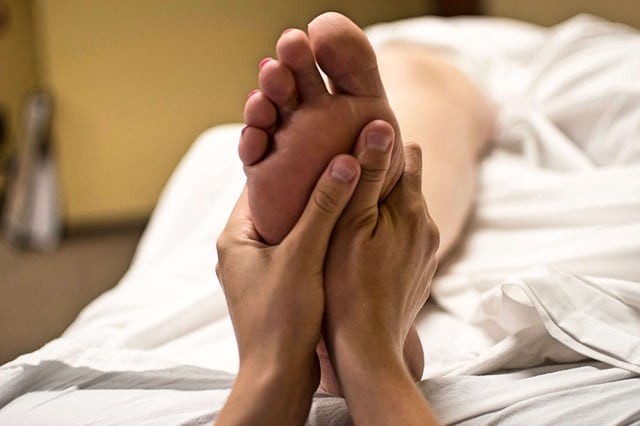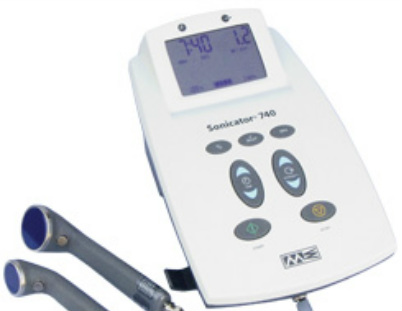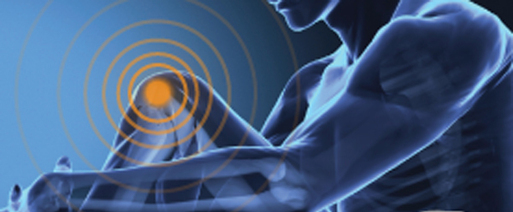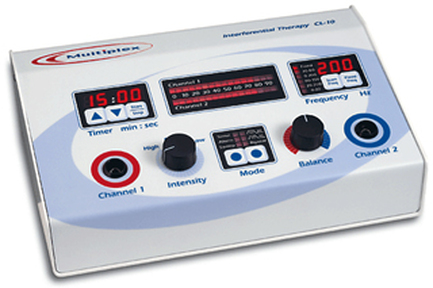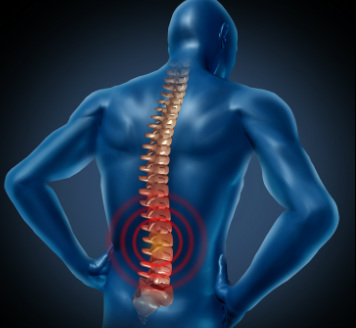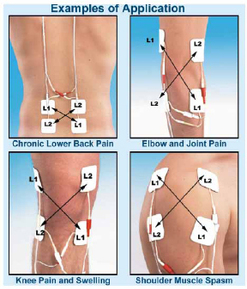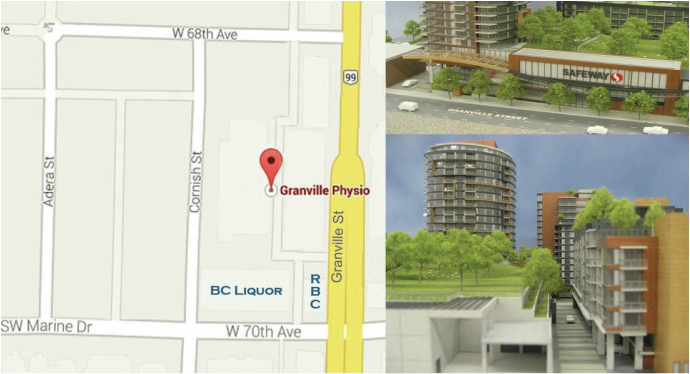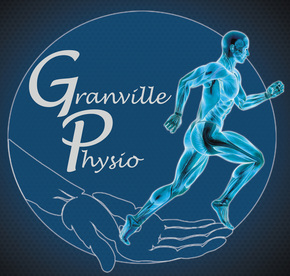shockwave Therapy
Shockwave is an innovative, non-invasive treatment involving high frequency, short duration, bursts of high-energy pulses that are transmitted into injured tissues. These high intensity pulses of mechanical energy aggravate the injured tissues (muscles, tendons, ligaments, bone, etc.) at a cellular level, which stimulates a healing response. This force imparted by the shockwave has been shown to be extremely effective in the breakdown of calcium deposits and scar tissue. Decomposition of these can lead to drastically increased function and mobility, and provides an almost immediate relief from pain. Furthermore, shockwave therapy stimulates cells in your body called osteoblasts and fibroblasts. Osteoblasts are responsible for bone healing and creating new bone tissue, while fibroblasts are responsible for healing connective tissues such as ligaments and tendons. Ultimately, this treatment strategy accelerates the healing process in the body by stimulating the metabolism and enhancing blood circulation to repair damaged tissue. The literature has shown this technique to be very successful!
For more information on Shockwave Therapy, click here or visit www.shockwavetherapyvancouver.ca/.
For more information on Shockwave Therapy, click here or visit www.shockwavetherapyvancouver.ca/.
IMS/Dry needling
Intramuscular stimulation (IMS) is a proven method to quickly improve patients' chronic and sub-acute conditions.
In simple terms, it involves needling tight muscles. This causes muscles to twitch, and this twitch in turn causes muscles to relax through a spinal reflex. This is particularly effective when done to the spinal muscles, and to understand why, you can imagine the spinal muscles as a breaker box. Just as resetting the fuse on a breaker box can help restore power throughout a house, IMS treatment to the spinal muscles can help treat issues further away from the spine. Often times, issues in the central region (such as the neck) can cause muscles to tighten in the extremities, such as the arm. An example of this would be a case of tennis elbow that is in part caused by issues in the neck; if these issues remain untreated it is unlikely that the tennis elbow will go away.
In addition to causing muscles to relax, IMS also causes micro-trauma. While this may intuitively sound negative, it actually serves to stimulate healing at the site of injury, and is extremely effective in recovery.
When inserting a needle using IMS technique the results are threefold:
The effects of IMS are cumulative. Eventually the condition is healed and the pain disappears.
How often should I have IMS/Dry needling?
Treatments are usually once a week to allow time between treatments for the body to heal itself. The number of treatments you require will depend on several factors such as:
More questions? Click here.
In simple terms, it involves needling tight muscles. This causes muscles to twitch, and this twitch in turn causes muscles to relax through a spinal reflex. This is particularly effective when done to the spinal muscles, and to understand why, you can imagine the spinal muscles as a breaker box. Just as resetting the fuse on a breaker box can help restore power throughout a house, IMS treatment to the spinal muscles can help treat issues further away from the spine. Often times, issues in the central region (such as the neck) can cause muscles to tighten in the extremities, such as the arm. An example of this would be a case of tennis elbow that is in part caused by issues in the neck; if these issues remain untreated it is unlikely that the tennis elbow will go away.
In addition to causing muscles to relax, IMS also causes micro-trauma. While this may intuitively sound negative, it actually serves to stimulate healing at the site of injury, and is extremely effective in recovery.
When inserting a needle using IMS technique the results are threefold:
- A contraction is initiated which stimulates a stretch receptor in the muscle, producing a reflex relaxation (lengthening) of the muscle. Once this is done a second component of the same receptor causes the muscle to reset its “normal” resting length to this length.
- The needle also causes a small injury that draws blood to the area, initiating the many natural healing chemicals to the site.
- The treatment creates an electrical potential in the muscle to make the nerve function normally again.
The effects of IMS are cumulative. Eventually the condition is healed and the pain disappears.
How often should I have IMS/Dry needling?
Treatments are usually once a week to allow time between treatments for the body to heal itself. The number of treatments you require will depend on several factors such as:
- the duration and extent of your condition
- how much scar tissue there is, (usually increased after previous surgery)
- how quickly your body can heal depending on the condition of your nerves.
More questions? Click here.
Manual Therapy
Within the physiotherapy profession, manual therapy is defined as a clinical approach utilizing skilled, specific hands-on techniques used to diagnose and treat soft tissues and joint structures for the purpose of:
Techniques include:
Manual therapy is the most difficult skill for a physiotherapist to learn and requires a great deal of education and practice. It is an essential component to any good therapist’s tool kit. If your therapist is not using manual therapy as a component of treatment you’re not getting the best treatment available.
- modulating pain
- increasing range of motion (ROM)
- reducing or eliminating soft tissue inflammation
- inducing relaxation
- facilitating correct mechanical movements in joints
- improving function
Techniques include:
- MET (muscle energy technique): designed to mobilize restricted joints and lengthen shortened muscles
- Myofascial release: Often muscle tension will interfere or inhibit normal joint motion and function. Myofascial release breaks the “adhesions” in muscles and tendons that may be caused by scar tissue, swelling, edema or spasm. Each layer of tissue is evaluated from the skin down to the muscle and areas of greatest resistance are released through various movements and pressures.
- Manipulation: The goal of this procedure is to restore the gliding motion of joints, enabling them to open and close effectively. It is more aggressive than a joint mobilization or METs, and involves a single thrust type of movement into the restriction barrier of the joint. Increased range of motion along with decreased muscle tone is normally seen directly after manipulation.
- Mobilizations: Often muscle spasms are secondary to a restricted joint. Joint mobilizations loosen up restricted joints and increase its range of motion by providing slow and repetitive movements, to improve joint range of motion.
Manual therapy is the most difficult skill for a physiotherapist to learn and requires a great deal of education and practice. It is an essential component to any good therapist’s tool kit. If your therapist is not using manual therapy as a component of treatment you’re not getting the best treatment available.
Acupuncture
Acupuncture is a therapeutic technique to help relieve pain and inflammation in order to improve the ability to move. As Acupuncture stimulates the body’s natural healing process it can also improve sleep, mood and energy levels.
Acupuncture originated in China over 3000 years ago and involves the insertion of fine sterile needles into specific points on the body. There are close to 1000 acupuncture points on the human body. In Traditional Acupuncture, these points are believed to be connected by 12 paired and 8 secondary pathways called Meridians. The meridians conduct energy or qi (pronounced “Chee”) and each point has a different effect on the qi that passes through it.
Traditionally, Acupuncture is used to bring balance to the energy flow of the body. As Acupuncture was introduced into Western culture, further investigation was conducted to determine why Acupuncture is effective at pain relief. To date, a vast body of literature exists to support how the needle insertion reduces pain. As the needle is inserted into a specific point on the body it stimulates the associated sensory nerve that communicates with the nervous system to release Endorphins, our body’s natural analagesics (pain killers). This is accompanied by the release of Adrenocorticotropic Hormone (ACTH) that helps to control inflammation in the body.
Acupuncture originated in China over 3000 years ago and involves the insertion of fine sterile needles into specific points on the body. There are close to 1000 acupuncture points on the human body. In Traditional Acupuncture, these points are believed to be connected by 12 paired and 8 secondary pathways called Meridians. The meridians conduct energy or qi (pronounced “Chee”) and each point has a different effect on the qi that passes through it.
Traditionally, Acupuncture is used to bring balance to the energy flow of the body. As Acupuncture was introduced into Western culture, further investigation was conducted to determine why Acupuncture is effective at pain relief. To date, a vast body of literature exists to support how the needle insertion reduces pain. As the needle is inserted into a specific point on the body it stimulates the associated sensory nerve that communicates with the nervous system to release Endorphins, our body’s natural analagesics (pain killers). This is accompanied by the release of Adrenocorticotropic Hormone (ACTH) that helps to control inflammation in the body.
Therapeutic Exercise
Exercise planned and performed to attain a specific physical benefit, such as maintenance of the range of motion, strengthening of weakened muscles/balancing out asymmetries, increased joint flexibility, restoration of movement patterns, or improved cardiovascular and respiratory function.
It is an essential component to any good therapist’s tool kit. If your therapist is not using exercise therapy as a component of treatment you’re not getting the best treatment available.
It is an essential component to any good therapist’s tool kit. If your therapist is not using exercise therapy as a component of treatment you’re not getting the best treatment available.
Instrument-Assisted Soft Tissue Mobilization
Enables physiotherapist to effectively break down scar tissue and fascial restrictions. The technique utilizes specially designed stainless steel instruments to specifically detect and effectively treat areas exhibiting soft tissue fibrosis or chronic inflammation.
Why is scar tissue a problem?
Scar tissue limits range of motion, and in many instances causes pain, which prevents the patient from functioning as he or she did before the injury.
How is scar tissue different from other tissue?
When viewed under a microscope, normal tissue can take a couple of different fashions: dense, regular elongated fibers running in the same direction, such as tendons and ligaments; or dense, irregular and loose with fibers running in multiple directions. In either instance, when tissue is damaged it will heal in a haphazard pattern–or scarring–that results in a restricted range of motion and, very often, pain.
How are the instruments used?
The instruments are used to enhance the clinician’s ability to detect adhesions, scar tissue or restrictions in the affected areas. Skilled clinicians use the stainless steel instruments to comb over and “catch” on fibrotic tissue, which immediately identifies the areas of restriction. Once the tissue has been identified, the instruments are used to break up the scar tissue so it can be absorbed by the body.
Is the treatment painful?
It is common to experience minor discomfort during the procedure and some bruising afterwards. This is a normal response and part of the healing process.
- Separates and breaks down collagen cross-links, and splays and stretches connective tissue and muscle fibers
- Increases skin temperature and amount of blood flow to and from the area
- Facilitates reflex changes in the chronic muscle holding pattern
- Alters spinal reflex activity (facilitated segment)
- Increases cellular activity in the region, including fibroblasts and mast cells
- Increases histamine response secondary to mast cell activity
Why is scar tissue a problem?
Scar tissue limits range of motion, and in many instances causes pain, which prevents the patient from functioning as he or she did before the injury.
How is scar tissue different from other tissue?
When viewed under a microscope, normal tissue can take a couple of different fashions: dense, regular elongated fibers running in the same direction, such as tendons and ligaments; or dense, irregular and loose with fibers running in multiple directions. In either instance, when tissue is damaged it will heal in a haphazard pattern–or scarring–that results in a restricted range of motion and, very often, pain.
How are the instruments used?
The instruments are used to enhance the clinician’s ability to detect adhesions, scar tissue or restrictions in the affected areas. Skilled clinicians use the stainless steel instruments to comb over and “catch” on fibrotic tissue, which immediately identifies the areas of restriction. Once the tissue has been identified, the instruments are used to break up the scar tissue so it can be absorbed by the body.
Is the treatment painful?
It is common to experience minor discomfort during the procedure and some bruising afterwards. This is a normal response and part of the healing process.
Taping
Taping and bracing injured joints and body parts protects those areas from further re-injury and allows for an earlier return to activity. It also can supply support to an area which will allow muscles which have tightened or ligaments which have been sprained to be relieved of stress thus facilitating an earlier return of motion and a quicker healing timeline. Finally, taping can be used to facilitate changes in how someone moves or which muscles they use when doing certain movements.
The quality of tape that you use can make a significant difference. To completely immobilize a joint Hypafix and Leukotape are the products your therapist should use. To immobilize a joint for only a short period athletic tape is ok. To facilitate changes in movement patterning or decrease stress to a joint or tissue without immobilizing Rock Tape is the best adhesive kinesiology tape. Only the best products are used at Granville Physio.
The quality of tape that you use can make a significant difference. To completely immobilize a joint Hypafix and Leukotape are the products your therapist should use. To immobilize a joint for only a short period athletic tape is ok. To facilitate changes in movement patterning or decrease stress to a joint or tissue without immobilizing Rock Tape is the best adhesive kinesiology tape. Only the best products are used at Granville Physio.
Posture perfect
Posture perfect is a solution provided by Granville Physio that will enable you to change your posture for life!
What it entails:
First assessment (1 hour and 30 minutes)
Next five treatments (1 hour)
$1000 worth of assessment, treatment, and tape for $899
What it entails:
First assessment (1 hour and 30 minutes)
- series of initial pictures are taken in sitting and standing
- a physiotherapist does a standing and sitting analysis that assess you from head to toe
- your workstation or job may also be discussed
- the physiotherapist then gives you a full complement of exercises to complete over a 2-6 week period
- tape may then be applied to hold you in a better position
Next five treatments (1 hour)
- on a return visit at 2, 6, 10, 16, and 24 weeks pictures are retaken and exercises added or modified and tape reapplied
$1000 worth of assessment, treatment, and tape for $899
ergonomics
With the combination of technology gains and automation people do more repetitive work. Sometimes this creates situations where people are primarily in one position (sitting for instance). If you spend 8 to 10 hours a day sitting at a desk and a few more hours at home, you are likely to put a lot of strain on your entire body. The effects of any physiotherapy program are only beneficial if your work or home environment is conducive for good posture and body mechanics.
Ergonomic assessments are beneficial following an injury. However, they are also beneficial in the prevention of injuries such as repetitive strains. These assessments can be conducted on-site or during treatment. A history is taken for each client, followed by an in-depth look at their regular work schedule, tasks and positions. At the completion of the assessment, recommendations can be made with respect to changing positions, changing furniture or other medical intervention. Written reports can be produced at the request of the individual or employer outlining potential changes, where to purchase solutions or how to implement changes. Further to this a graphical representation can be drawn up that summarizes how effective these changes will be compared to their cost to implement.
Ergonomic assessments are beneficial following an injury. However, they are also beneficial in the prevention of injuries such as repetitive strains. These assessments can be conducted on-site or during treatment. A history is taken for each client, followed by an in-depth look at their regular work schedule, tasks and positions. At the completion of the assessment, recommendations can be made with respect to changing positions, changing furniture or other medical intervention. Written reports can be produced at the request of the individual or employer outlining potential changes, where to purchase solutions or how to implement changes. Further to this a graphical representation can be drawn up that summarizes how effective these changes will be compared to their cost to implement.
Massage Therapy
Massage therapy consists primarily of hands-on manipulation of the soft tissues of the body, specifically, the muscles, connective tissue, tendons, ligaments and joints for the purpose of optimizing health.
Massage therapy treatment has a therapeutic effect on the body and optimizes health and well-being by acting on the muscular, nervous and circulatory systems.
Physical function can be developed, maintained and improved; and physical dysfunction and pain and the effects of stress can be relieved or prevented through the use of Massage Therapy.
Here are some of the types of massage we offer:
Swedish massage
Swedish massage is the general and most basic massage. It can also be known as a relaxation massage
Pregnancy massage
Special consideration is taken while massaging a pregnant woman. This type of massage caters to the ongoing changes which the body goes through.
Therapeutic massage
All types of massages have a therapeutic effect whether it be physical or physiological. Anything from pain and stiff joints, to stress and anxiety can be addressed with massage.
Deep tissue massage
This type of massage is deeper than a typical Swedish massage that’s adjusted to the patient’s liking. Generally used to keep the muscles maintained in between activities.
Trigger point massage
One of the most common causes of muscular pain is due to trigger points. A massage focusing on trigger point release is one of the most effective ways to manage trigger points.
Pre/Post exercise massage
A pre-exercise massage focuses on activating muscle and is generally quicker paced than a regular massage. Massage post exercise emphasizes flushing and stretching the muscles. It is effective in preventing and managing post-exercise soreness.
Massage therapy treatment has a therapeutic effect on the body and optimizes health and well-being by acting on the muscular, nervous and circulatory systems.
Physical function can be developed, maintained and improved; and physical dysfunction and pain and the effects of stress can be relieved or prevented through the use of Massage Therapy.
Here are some of the types of massage we offer:
Swedish massage
Swedish massage is the general and most basic massage. It can also be known as a relaxation massage
Pregnancy massage
Special consideration is taken while massaging a pregnant woman. This type of massage caters to the ongoing changes which the body goes through.
Therapeutic massage
All types of massages have a therapeutic effect whether it be physical or physiological. Anything from pain and stiff joints, to stress and anxiety can be addressed with massage.
Deep tissue massage
This type of massage is deeper than a typical Swedish massage that’s adjusted to the patient’s liking. Generally used to keep the muscles maintained in between activities.
Trigger point massage
One of the most common causes of muscular pain is due to trigger points. A massage focusing on trigger point release is one of the most effective ways to manage trigger points.
Pre/Post exercise massage
A pre-exercise massage focuses on activating muscle and is generally quicker paced than a regular massage. Massage post exercise emphasizes flushing and stretching the muscles. It is effective in preventing and managing post-exercise soreness.
ultrasound
Ultrasound functions to speed up tissue healing, decrease swelling, decrease pain, and increase tissue extensibility. It does this through mechanical and thermal (heating) mechanisms.
Mechanical: these benefits arise due to two separate phenomenon
Cavitiation:
occurs due to pressure changes, gas bubbles oscillate (compress with peak of wave & expand with valley)
Acoustic (Micro) Streaming:
one directional motion of fluid caused by sound wave
Mechanical Benefits include:
Thermal: (same as superficial heating but deeper)
Mechanical: these benefits arise due to two separate phenomenon
Cavitiation:
occurs due to pressure changes, gas bubbles oscillate (compress with peak of wave & expand with valley)
Acoustic (Micro) Streaming:
one directional motion of fluid caused by sound wave
Mechanical Benefits include:
- improves cell membrane permeability (opens protein channels for exit and calcium channels to enter
- increases macrophage activity
- causes stronger more elastic connective tissue
- increases cytokines
- increases blood flow
- increases fibroblast activity
- reduces edema formation
- can also help drive topical medicine into the tissues
Thermal: (same as superficial heating but deeper)
- increases nerve conduction velocity
- increases extensibility of collagen based structures
- increases blood flow
- enhanced adhesion of leukocytes
- increased bradykinin
- increased metabolic activity
- reduces spasm
- increases venous & lymphatic return
- increases oxygen dissociation off hemoglobin
- improves strength & function of collagen tissue
- reduces pain: decreases mechanical pressure, reduces spasm (decreased firing of gamma & alpha motor neurons), decreased ischemia
interferential Current (ifc)
IFC functions to speed up tissue healing, decrease swelling, and decrease pain.
Pain control:
Promotes Wound Healing
Tissue healing/Swelling:
Pain control:
- gate control (presynaptic inhibition of A-delta & C fibres & large A-beta mechanoreceptors)
- descending pain suppression & endogenous opiate (smaller A-d & C fibres)
- decreases spasm
- blocks nociceptive activity
- removes pain metabolites
- reduces swelling therefore decreasing pressure on receptors and improving blood supply to region
Promotes Wound Healing
- attracts antimicrobial factors to region
- helps break down & absorb blood clots
Tissue healing/Swelling:
- increases removal of vasoactive agents, debris, & waste products
- increases cell membrane permeability
- increases blood flow by stimulating the autonomic nervous system and depressing the sympathetic nervous system
- muscle pump decreases edema

